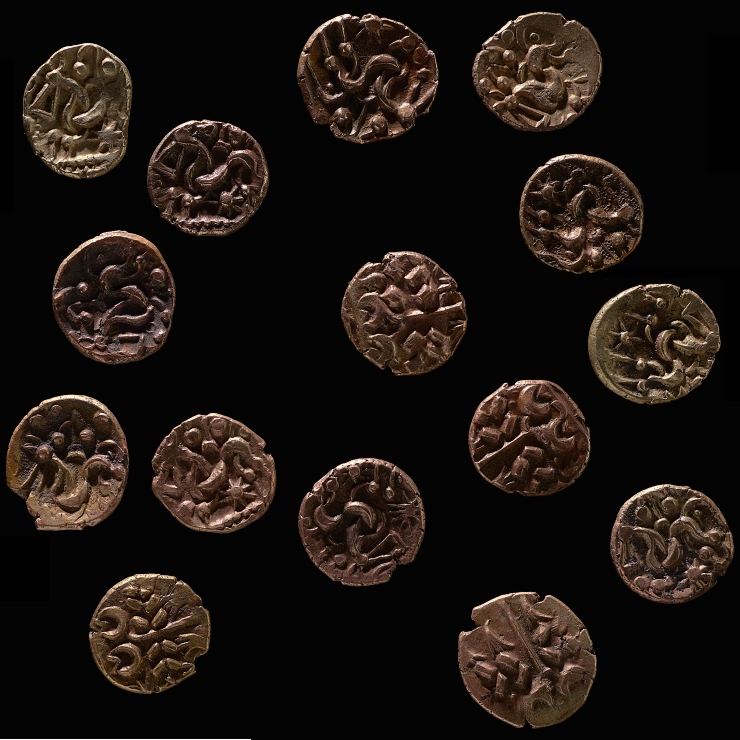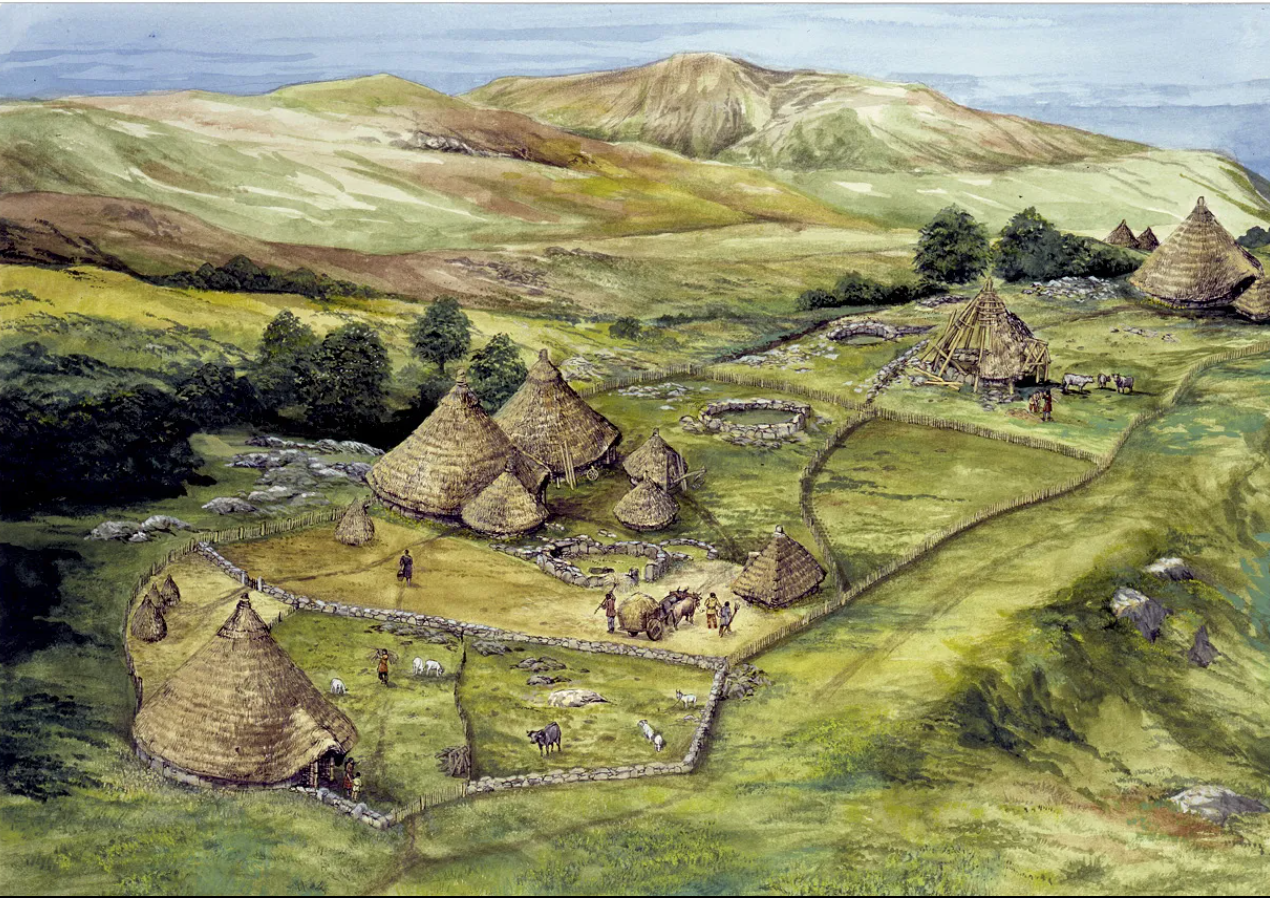Mince jsou nádherný.
Pak je fantastický, jak se jim zachoval železnej řežez.
Zkoumal jsem, co znamená
Keltští Corieltaviové ... neměli jediného vládce. Mince ... nesou jména ... pravděpodobných vůdců.
Ono to zřejmě mělo být, že neměli jendoho vládce, tedy že jim měli víc najednou.
Three detectorists discover a rare hoard of Celtic gold staters - the first in Wales
Categories: Nálezy nejenom s detektorem ve Velké Británii a Irsku
The coins were found scattered in a field at Llangoed on the Isle of Anglesey between July 2021 and March 2022 by detectorists Lloyd Roberts, Peter Cockton and Tim Watson. These are the first Iron Age gold coins discovered in Wales. This makes it one of the most important discoveries of national significance.
The first of the coins was found by Roberts. He immediately recognised the Iron Age gold staters in it. Later, he found a second. His friend Peter discovered three more. Tim Watson later found the remaining 10 coins. I never expected to actually find one, let alone on Anglesey. You can imagine my shock, delight and surprise when I phoned my friend Peter to say I had unearthed a beautiful full gold staters in immaculate condition," Roberts described his first find.
"After contacting Portable Antiquities Scheme, we both just sat back, had a coffee and imagined what our neighbourhood and people's lives were like over 2,000 years ago! We were delighted to discover that this is the first hoard of Iron Age gold coins ever to be found in Wales and we are delighted that it will be on display in the museum for all to share with Peter and I," he added.
A little later, then novice detectorist Tim Watsen found a total of 10 coins, "I'm a relative newcomer to detecting. My dad challenged me during lockdown to give it a try. I visited the field a few times and didn't find anything special, but one evening I literally struck gold," he said of his first unique experience.
"I rushed home to show my wife and we were both in awe of the coin, which was unlike anything else I had ever found. So immaculately preserved with unusual pictures. I enthusiastically decided to upgrade my metal detector, which was money well spent as I found 9 more coins in the same location in the following weeks. I'm really looking forward to seeing them all together in the museum," he concluded.
Following its discovery, the Gwynedd Archaeological Trust carried out a survey of the site in September 2021, led by Peter Watson and the landowner Mr Jones. The field had long been pasture and was last ploughed 15 years ago. However, the site survey did not reveal any information about the hoard and its context - not where it was originally buried, whether it was buried and in what container, etc.
All the gold coins were in excellent condition. They were struck between 60 and 20 BC at three mints of the Celtic Corieltavi tribe in what is now Lincolnshire. The Celtic Corieltavi were mostly farmers and had no single ruler. They began minting coins in the early 1st century. They bear the names of several people, likely leaders.
The design of each coin is highly stylised, derived from the Macedonian gold coins of Philip II, which show a bust of Apollo on the obverse and a chariot with a double chariot on the reverse. The obverse of the staters depicts Apollo's wreath and hair, while the reverse depicts a stylized horse with a triangular head and various symbols surrounding it. The symbols are key distinguishing features for the different types of coins.
The Iron Age tribes inhabiting what is now Wales did not have their own coins and only madecoins of other tribes, so finds of coins in Wales from this period are very rare. They were probably not used for day-to-day transactions, rather they were used as gifts amongst the elite to secure alliances or loyalties, or as offerings to the gods, although they may sometimes have been used for important grand trades.
Politics, religion and commerce have always been inextricably linked. This set may therefore have been buried for a variety of reasons. Pagan priest-druids appear in Roman sources with reference to the Isle of Anglesey and its archaeological finds, such as the votive deposit at Llyn Cerrig Bach. The island was probably an important religious centre between the 1st century BC and AD. In addition, the island's Mount Parys was a source of copper, so the coins may have been traded for raw material.
All 15 coins have now been officially declared treasure. The Oriel Môn Museum on the Isle of Anglesey hopes to acquire them for its own collection to display to the public.
Roman Nemec
Sources: museum.Wales, thehistoryblog.com, bbc.com

golden staters treasure

the reverse of one of the staters

Iron Age votive treasure from Llyn Cerrig Bach

The reconstruction of the Iron Age settlement at Ty Mawr is an example of typical unenclosed farmsteads on Anglesey
The article is included in categories:
- Archive of articles > Archaeology > Finds and rescue research abroad > Nálezy nejenom s detektorem ve Velké Británii a Irsku



